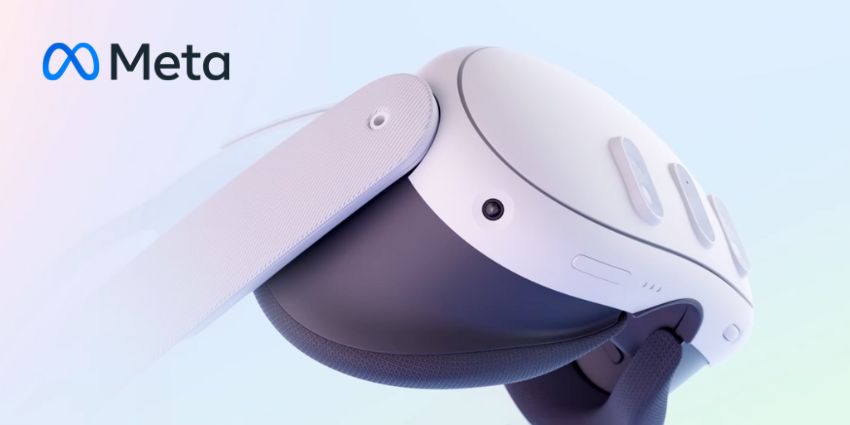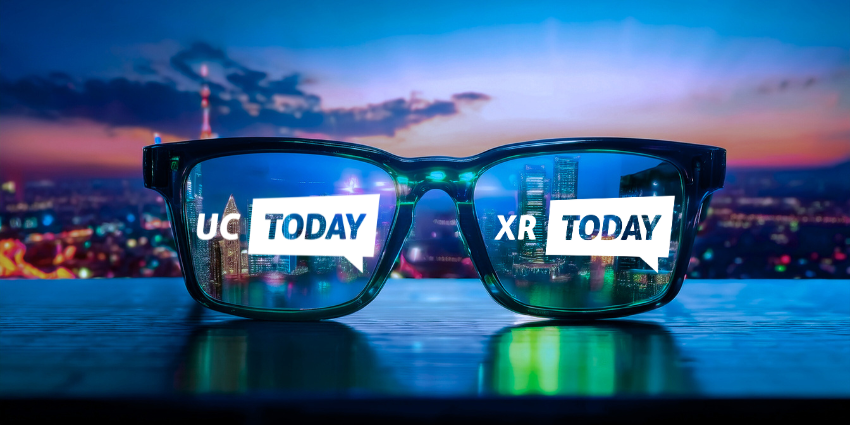The first time you try working in mixed reality, the oddest thing isn’t the headset. It’s the silence. No notifications buzzing, no cluttered tabs, no split-second distractions. Just you, your work, and a workspace that finally feels calm.
That’s the promise sitting behind the Meta Quest 4. Not another gaming gadget, but a serious move toward a more connected workday. Current Quest headsets already let you pull up Windows 11 in full view, spreadsheets on one side, video call floating nearby, your desk still visible through passthrough. For some teams, it’s already replacing the second monitor.
Meta is sitting at the top of the XR world right now, but that position comes with pressure. The Quest 4 will have to prove that the company still knows how to lead. The tricky part is that no one can say for certain when it’s actually coming.
The Meta Quest 4: The Initial Rumors
When talk of the Meta Quest 4 first started to spread, the story felt predictable. Meta had just found its rhythm with the Quest 3, and early reports suggested the next version would land in 2026. The promise sounded familiar: faster chips, slimmer lenses, fewer wires, the usual evolution. It seemed logical; the kind of steady progress we’ve come to expect in tech.
At Meta Connect, the company played the part well. They introduced the Ray-Ban Meta Display, the Meta Neural wristband, and even the Oakley Meta Vanguard specs. Unfortunately, nobody commented on a Meta Quest 4 release date.
Right now, much of Meta’s attention is on holding up its Reality Labs division, even after cutting spending by roughly 20 percent. The group has faced tough numbers, posting losses of around $55 billion since 2019. Still, the company’s leadership hasn’t lost faith in the Quest line. If anything, they’re leaning harder into smart glasses as the next big play. As Zuckerberg said:
“To be clear, I think that our first-party Quest devices will continue to be the most popular headsets as we see today, and we’ll continue focusing on advancing the state-of-the-art tech and making it accessible to everyone. But I also think that opening our ecosystem and opening our operating system will help grow the ecosystem even faster.”
The Meta Quest 4 Release Date Reality Check
By mid-2025, the conversation around the Meta Quest 4 release date had changed tone. The question wasn’t “when will it launch” anymore, but what’s happening behind the scenes.
People close to Meta’s hardware division said the two prototypes, Pismo Low and Pismo High, had been set aside. Engineers were said to be focusing instead on a lighter mixed-reality design, something that feels more like eyewear than equipment. It doesn’t look like a setback so much as Meta stopping to catch its breath and rethink the path forward.
The new plan lines up with Meta’s broader pivot toward wearables and workplace tools. People are clearly getting excited about smart glasses too. Shipments increased by 110% in 2025, and Meta already owns nearly three-quarters of that segment, proof that smaller, more personal devices are sticking.
That means, next on the calendar, we’re likely to see a Puffin or Loma headset: a lightweight, tethered mixed-reality device expected around 2026. It trades raw horsepower for comfort and instant setup, running Horizon OS without the usual bundle of controllers. You could call it the bridge between today’s headsets and the Meta Quest 4 launch date still hovering beyond 2026.
Meta Quest 4 Potential Features
Information about the Quest 4 is still patchy, and no one outside Meta really knows what the final version will include. The company’s staying quiet, which leaves the rest of us piecing together clues and rumors.
Chances are there’ll be a bigger focus on comfort, particularly as Meta switches to more lightweight devices. Under the shell, the hardware will probably shape around Qualcomm’s Snapdragon XR2 Gen 3, or a similar system. It’s tuned for on-device AI and spatial workloads, so you notice it less as speed and more as steadiness. Movement feels grounded, apps transition without stutter, and virtual meetings stop feeling like second-rate versions of real ones.
Other possibilities:
- Eye and face tracking sensitive enough to mirror expression naturally. It helps rebuild nuance in digital meetings like a raised brow, a glance, a pause that lands.
- Eye-unlock for quick authentication, cutting another small friction point out of startup.
- An optional EMG wristband, reading faint muscle signals, might finally retire hand controllers in shared environments (similar to the current Neural band).
- Pancake lenses and lighter materials bring down strain for long sessions. Rumours suggest the possibility of FOV over 180 degrees – much bigger than what you get from the Quest 3.
- A redesigned strap and balance system built for multi-hour wear, especially in training or design reviews.
On the software side, Windows 11 already runs natively on existing Quests. You can spread documents across floating monitors, keep an app window for chat, and still see your desk through passthrough. It’s not perfect yet, but quietly useful.
Meta’s Horizon OS will tie all this together, shared across upcoming devices from ASUS and Lenovo, so enterprise IT teams won’t be chasing separate ecosystems.
Meta Quest 4 Price: What Will it Cost?
The Meta Quest 4 price isn’t confirmed, but we all know how Meta likes to keep things affordable. It’s unlikely they’re going to go the Apple Vision Pro route, with something over $3000. We’d assume Meta will instead aim for around the $700 mark. Although any EMG bands or accessories might cost you extra.
While other companies, like Samsung, continue to roll out “premium” headsets, Meta’s approach has always been the opposite. The company isn’t chasing margins; it’s chasing market share. The goal is to make its ecosystem so accessible that every team, from marketing to manufacturing, can afford to test it. That’s the same playbook that made the Quest 2 a hit during lockdowns, a device cheap enough to experiment with, but capable enough to prove a point.
Business leaders, however, think beyond sticker price. They’re looking at:
- Total cost of ownership (TCO): Meta’s hardware is built to work across multiple use cases: training, design, and meetings, which spreads investment over more departments.
- Lifecycle planning: Delays in the Meta Quest 4 release date mean Quest 3 and 3S pilots still have room to breathe. Many IT teams are using this gap to test Horizon OS deployment and workspace integrations ahead of the Meta Quest 4 launch date.
- Procurement logic: Controller re-use and modular accessories would let the new headset slide into existing inventories without full replacements.
Chances are, the Meta Quest 4 won’t win because it’s the most advanced headset. It’ll win because it’s the one every department can actually buy.
The Business Potential for the Meta Quest 4
In every big shift, there’s a moment when technology stops being “new” and just becomes useful. For XR, that moment is starting to show up in meeting rooms and training programs.
Teams that once laughed off headsets are now using them to run onboarding sessions, 3D design reviews, and site inspections without moving anyone across the map. What used to take two flights and a full week of coordination can happen in an afternoon.
Meta’s business case is built around exactly that kind of practicality. The current Quest line already supports Windows 11 virtual desktops, where users can line up multiple monitors, pin apps, and still see their physical keyboard through passthrough.
The upcoming Meta Quest 4 should push that idea further, blending collaboration apps with presence and spatial awareness instead of flat tiles on a screen.
It might not be as advanced as Samsung’s Galaxy XR headset, or an impending Apple Vision Pro 2, but it will be accessible, easy to use, and hopefully backed by business tools, like a fully-fledged app store, and Meta Quest for Business.
Deployment Strategy & Action Plan for Enterprises
For most organizations looking forward to the Meta Quest 4, the next 18 to 24 months will be spent refining pilots with the Quest 3 and Quest 3S. They’re already perfect for testing how immersive collaboration fits into existing meeting rhythms.
When the Meta Quest 4 release date finally lands, teams that have already built those habits will move faster. The hardware may be new, but the processes won’t be.
Here’s how most IT and operations teams are approaching it:
- Device management and security: Meta’s XR Business tools include enterprise admin controls, remote reset, and usage monitoring, all essentials for shared environments.
- Comfort and safety: Experimenting with lighter designs and controller-free navigation means easier sanitation and less fatigue for group training.
- Procurement roadmap: Pilot with Quest 3 now, test ASUS and Lenovo Horizon OS devices in 2026, and prepare budget cycles for the Meta Quest 4 launch date in 2027.
As always, it’s still worth keeping track of the market. Not just what Meta is doing with its smart glasses and Reality Labs research, but what countless companies are experimenting with for the future of immersive collaboration.
This isn’t about racing toward a release. It’s about being ready when the next wave of headsets makes the jump from interesting to indispensable.
Looking Forward to the Meta Quest 4
The Meta Quest 4 might still be months away, but the company’s research teams are already playing with ideas that make even this headset feel temporary.
Inside Meta’s labs, prototypes like Holocake, Butterscotch, and Starburst are testing what happens when optics catch up with imagination. We’re talking near-true brightness, retina-level clarity, and color depth that could finally make flat displays feel primitive. It’s early, sure, but it shows how fast “mixed reality” is evolving into “normal reality.”
Elsewhere, Meta’s work on Hypernova specs and AI-driven smart glasses hints at a future where computing lives quietly at the edge of your vision. Those devices will feed data into the same Horizon OS backbone as the Quest line, meaning every step forward in wearables makes the headset ecosystem smarter too.
Meta isn’t the only one chasing the future of XR. Samsung, Apple, and Qualcomm are all investing heavily in new optics and energy-efficient chips that could shape what comes next for AR.
When people look back, the Meta Quest 4 might not stand out as a single product launch, but as the moment the industry crossed a line. When extended reality started feeling like part of everyday work instead of a niche experiment.







